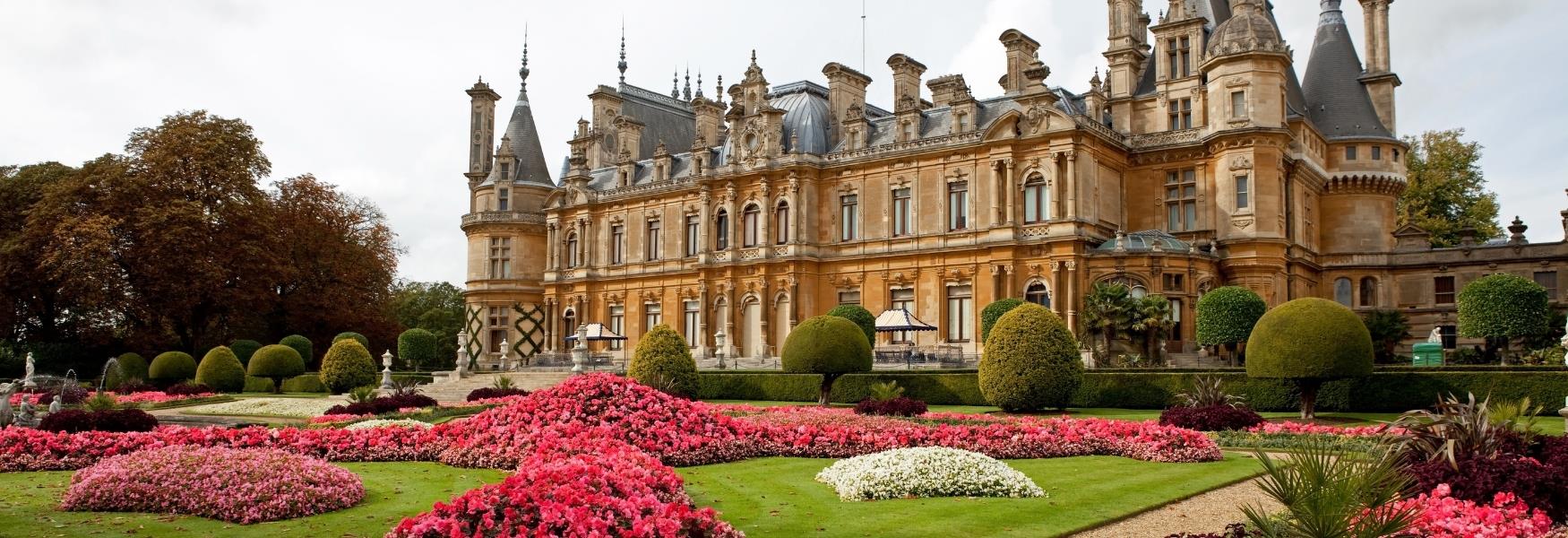To build your own Itinerary, click  to add an item to your Itinerary basket.
to add an item to your Itinerary basket.
Already saved an Itinerary?


Number of results: 77
, currently showing 21 to 40.
East Lothian
Gosford House, the large and magnificent mansion of the Earls of Wemyss, is set in 5,000 acres of combined coast and landscaped grounds with pleasure grounds, woodland and ponds, on the south side of the Firth of Forth.
Worksop
Most National Trust properties inspire thoughts of historic mansions, wealth and grandeur. However, tucked away in a private cul-de-sac in Worksop, Nottinghamshire, you’ll find Mr Straw’s House; the National Trust’s first small domestic property,…
Berkshire
One of England's finest Tudor manor houses set in classic gardens. Family owned in direct succession for nearly 500 years. Superb architecture, a fine collection of portraits, furniture from the 16th to 20thC and Norman church adjacent.
Durham
Durham Cathedral was built between the late 11th and early 12th century to house the bodies of St. Cuthbert (634-687 AD) (the evangeliser of Northumbria) and the Venerable Bede (672/3-735 AD).
Isle Of Skye
Any visit to the Isle of Skye is incomplete without enjoying the wealth of history on offer at 5* Dunvegan Castle & Gardens, the ancestral home of the Chiefs of Clan MacLeod for 800 years and the oldest continuously inhabited castle in Scotland.
Ripon
Veiled in a secluded valley, this World Heritage Site promises to surprise and captivate with its vast Cistercian abbey ruins, Georgian water garden, a medieval deer park, Elizabethan Hall and Gothic church.
Devon
Cadhay is approached by an avenue of lime-trees, and stands in an extensive garden, with herbaceous borders and yew hedges, with excellent views over the original medieval fish ponds.
Omagh
Guided tours of Barons Court are available by appointment. Situated in a sheltered valley in the foothills of the Sperrin mountains in Ireland’s County Tyrone, Barons Court is the home of the Duke of Abercorn and was built between 1779 and 1782,…
Perthshire
Built in 1791. Destroyed by fire in 1908 and rebuilt and furnished by Sir Robert Lorimer.
Llanfairfechan
This Arts and Crafts house was built in 1900 by the architect H L North as his family home and contains much of the original furniture and William Morris fabrics.
Knutsford
The finest Palladian house in the northwest, Tabley was designed by John Carr of York for the Leicester family. It houses one of the finest collections of English paintings, including works by Turner, Reynolds, Lawrence and Dobson.
Sevenoaks
Sitting proudly within Kent’s last medieval deer park, Knole is a vast estate where visitors follow in the footsteps of tourists who have visited Knole’s showrooms for 400 years.
Grantham
Built c1580. 400 years of Fane family portraits. Open by written appointment. Guided tours by owner approximately 11/4 hours. Tearooms at The Crafty Cafe, 100 yards, for light lunches and teas.
Huntingdon
Hemingford Manor, built circa 1130 and one of the oldest continuously inhabited houses in England, was the home of the author Lucy Boston from 1939 until her death in 1990.
Matlock
The Derwent valley, upstream from Derby on the southern edge of the Pennines, contains a series of 18th and 19th century cotton mills and an industrial landscape of high historical and technological significance.
Kirriemuir
Countryside walks including access through woodlands to Airlie Monument on Tulloch Hill with spectacular views of the Angus Glens and Vale of Strathmore. Footpaths are waymarked and colour coded.
Salisbury
Whether you come to stroll in the grounds, watch your children let off steam in the adventure playground, or enjoy the art collection in the House, come and enjoy Wilton House.
Epping
Copped Hall was the burnt-out shell of a fine Georgian mansion but now being restored. Superbly sited on a ridge overlooking its landscaped parkland. The mansion and gardens are situated on a site of ancient human habitation.
Lewes
Firle Place has been the home of the Gage family for over 500 years. Set at the foot of the Sussex Downs within its own parkland, this unique house, originally Tudor, is built of Caen stone and was substantially remodelled in the 18th century.